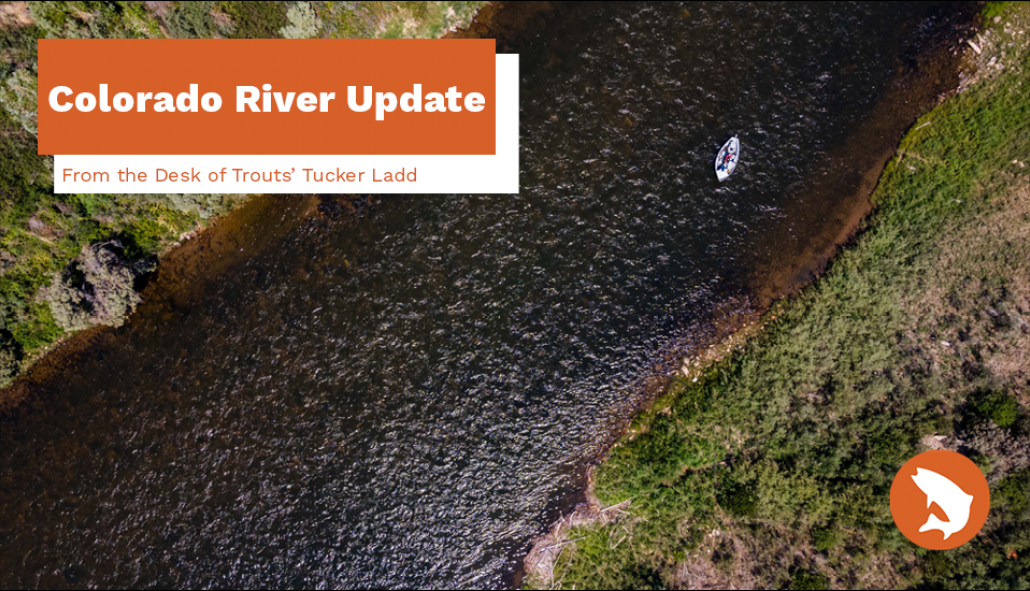Colorado River Update - July 13th, 2022
As we near the midpoint of July, it is disheartening to see the Colorado River nearing similar low flow and high water temperatures that we experienced in the Summer of 2021. Don’t get me wrong, I fully acknowledge and appreciate the fact that we had below normal snowpack levels at the end of the 2022 winter season, and as a result, low flows and higher than average water temperatures were a likely result of a less-than-ideal winter. Instead, these flows are disappointing, just as they were during the 2021 summer season, as they are entirely avoidable.
Case in point, currently near the headwaters of the Colorado River at Kremmling, CO, the Colorado River is only flowing at 524 cfs, more than 50% below the median daily average. Now, one may argue that there isn’t any water left to come down from the high country, thus there isn’t much we can do. My rebuttal, B&#! S#*%. Here are the current outflows of the three main tributaries of the Colorado River near the town of Kremmling that are major contributors to downstream flow:
- Blue River Below Green Mountain Reservoir - 133 cfs
- Williams Fork River below Williams Fork Reservoir - 129 cfs
- Muddy Creek below Wolford Mountain Reservoir - 47 cfs
Take a moment to reflect that only two of the three sources of Colorado River water are flowing over 100 cfs, and the other is below 50 cfs in flow in July. These flows are even more upsetting when you take into account the current reservoir capacities of the four holding ponds that supply water to the Colorado River system:
- Dillon Reservoir (Blue River) - 95% full
- Green Mountain Reservoir (Blue River) - 84%
- Williams Fork Reservoir (Williams Fork River) - 100% full
- Wolford Mountain Reservoir (Muddy Creek) - 100%
On July 7th, 2021 Colorado Parks and Wildlife (CPW) announced a voluntary closure of the Colorado River between Kremmling and Rifle due to dangerously low water flows and high water temperatures. This was an unprecedented closure, affecting over 100 miles of the Colorado River. If you go back and look at what the Colorado River and its three main upper tributaries were flowing at, you would think you’re in the middle of the movie Ground Hog Day. Even more puzzling is how in 2021, directly following the announcement of the voluntary closure, the water management agencies responsible for the 4 major reservoirs noted above, all increased outflows. Within days, water temps began to ease for the river flowing below Kremmling, and the voluntary closures slowly began to lift.
So I have to ask, what wasn’t learned in 2021 as we head into the warmest days of our Summer Season? I understand the need to hold onto as much water as possible in our higher elevation reservoirs, as the colder air temps help ensure minimal evaporation of this precious resource. But when we are watching water temperature rise on our state’s namesake river, and fish are beginning to struggle to survive, isn’t it time to react by putting more water in the river?
Over the course of the last few years, Coloradans have done their part to reduce our water use to meet predetermined metrics set by all states that rely on Colorado River water, as have all other states in the Upper Basin (Colorado, Utah, New Mexico and Wyoming). We have seen the ill-effects of withholding too much water from the Colorado River in 2021, and I can only be hopeful that those in charge of managing our state's water supply will take the aquatic residents of our state’s namesake river into account when deciding how to proceed forward.

